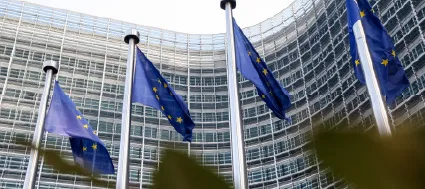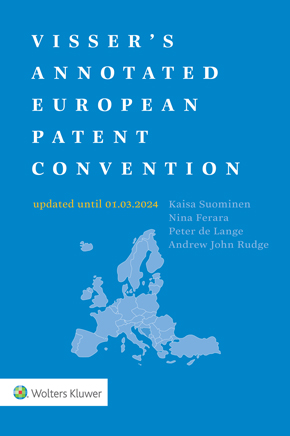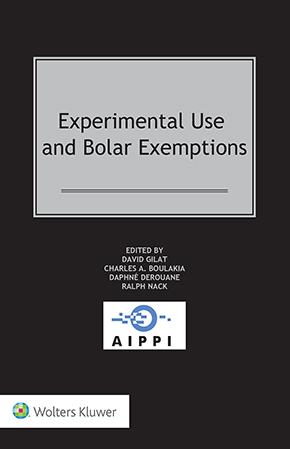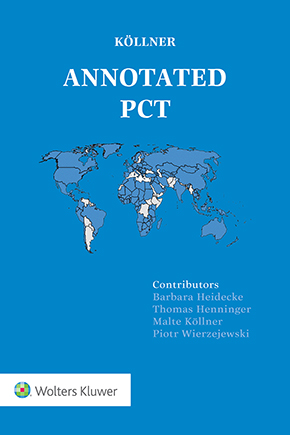Restoring Balance in SEPs Governance - Next Steps for the EU After the Regulation's Withdrawal
September 15, 2025
The withdrawal of the European Commission’s Standard Essential Patents (SEPs) Regulation proposal earlier this year has left a significant void in EU intellectual property policy. This decision was met with mixed reactions—welcomed by SEPs holders but criticised by SEPs licensees and industry groups.
At the same time, SEPs owners and standards’ users had been united in recognising and welcoming the proposal’s broad goals, namely to make the licensing of SEPs more transparent, efficient, and predictable. The question now is thus not whether alternative action is needed, but what can and should be done to establish urgently needed equilibrium between SEPs owners’ and licensees’ interests while ensuring innovation continues to thrive and taking into account the learnings from the discussion of the merits and drawbacks of the withdrawn Regulation proposal. Policymakers, regulators as well as courts can and will have to play a role in shaping a way forward.
The Unfinished Business of Huawei v. ZTE
Nearly a decade after the Court of Justice of the European Union (CJEU) established its landmark framework in Huawei v. ZTE (2015), there has been fairly little convergence on its application. The CJEU’s five-step framework established in that case was designed to balance the interests of SEPs holders seeking to protect their innovations with standards’ users needing access to standardised technologies. However, the framework’s application has continued to significantly diverge across courts, creating the very uncertainty it was meant to resolve.
Case law has certainly evolved, but different national courts and first FRAND rulings by different local divisions of the Unified Patent Court (UPC) have kept reading and applying the CJEU’s ruling in fundamentally different ways. That this applies even within Germany, the EU Member State with doubtlessly the highest SEPs-related caseload experience, goes to show the level of challenge involved in interpreting the ruling.
Some German courts have focused on increasingly clarifying the standards for the (good-faith behavioural) requirements on the infringer to raise a valid FRAND defence, while only a few rulings by other German courts have tested the SEPs holder’s behaviour on potential abusiveness by assessing whether the SEPs holder actually provided a FRAND offer prior to bringing the court action.
Even the two first material UPC FRAND rulings in Panasonic v. Oppo and in Huawei v Netgear differ in their approach in this respect. It is certainly true that the art of adjudication is very often necessarily about complementing literal application of the written law with its intended purpose to render justice to specific circumstances of a case. But the Huawei v ZTE ruling appears to have left courts with confronting realities against which their understanding of the CJEU’s intent and a reading of the ruling, as e.g. promoted through the European Commission amicus curiae brief in VoiceAge v HMD, seem to increasingly diverge - at least when assuming that the ruling’s reference to FRAND does not only have a behavioural meaning. The result is a fragmented landscape where forum shopping is incentivised and legal certainty remains elusive.
The Case for a New CJEU Referral
The most compelling next step would be a strategic referral to the CJEU that addresses the gaps and inconsistencies left by Huawei v. ZTE. Such a referral could emerge from several ongoing disputes, particularly those involving fundamental questions about the framework’s application.
A well-crafted referral should address several critical issues that have divided national courts. As mentioned, the European Commission advocates for a strictly sequential application of the Huawei framework (see again the VoiceAge brief - see here for an unofficial translation in English), while many national courts prefer a more flexible, holistic approach. This disagreement goes to the heart of how FRAND negotiations should be conducted and evaluated. Clear guidance from Luxembourg could eliminate this source of uncertainty.
Another (but related) issue focuses on “security deposit”. The Munich Higher Regional Court’s recent emphasis on security deposits as a prerequisite for FRAND defences has created new tensions. This approach—requiring standard users to provide collateral matching the SEPs holder’s demand regardless of whether that demand is FRAND-compliant— alters the balance established in Huawei v. ZTE. A CJEU ruling could clarify whether such requirements are consistent with EU competition law principles.
Indeed, such approach places the burden on SEPs licensees as a precondition for avoiding injunctions, and is seen as less flexible, focusing on liquidity and reflecting stricter enforcement patterns. A more viable option, for example, would be the pro-tem security deposit used in India, which lets standards’ users continue using SEPs during litigation by depositing a flexible, court-negotiated sum, protecting also SEPs owners’ interests without matching the last royalty offer. The interim licensing approach recently embraced by UK courts would also be welcome, as it similarly allows continued SEPs use during litigation while providing interim financial security to the SEPs holder.
Potential Pathways to Referral
The most promising avenue for a new referral may come through the German Federal Court of Justice (Bundesgerichtshof). The Munich appeals court’s decision in VoiceAge v. HMD has been granted leave to appeal specifically because of its fundamental importance to SEPs law. If the Federal Court disagrees with the European Commission's position, a referral to the CJEU for clarifying the Huawei v ZTE guidelines may be likely.
Alternatively, the UPC growing SEPs jurisprudence could generate suitable cases for referral. The UPC’s recent decisions and other cases show that while the court develops its own approach to FRAND issues, it also faces very similar differences in interpreting Huawei v ZTE, potentially creating additional divergence with national courts that could warrant CJEU clarification.
Implementing Effective Checks and Balances
Beyond judicial clarification, there is a need of structural reforms to promote balanced SEPs dispute resolution in Europe. Following the withdrawal of the EU SEPs Regulation Proposal, the European Commission should establish and moderate a stakeholder forum to assess how the aims of the Regulation could best be achieved in other ways, especially when it comes to increased transparency and aiding parties to agree FRAND royalties for large portfolios of claimed SEPs. In parallel, institutional capabilities and initiatives to support healthy FRAND licensing ecosystems should be leveraged and encouraged.
The European Patent Office (EPO) recent study on standards and patents, for example, provides a foundation for better coordination between courts. The EPO could expand its role in providing technical expertise to courts handling SEPs disputes, helping ensure more consistent essentiality and FRAND determinations across jurisdictions.
Also, rather than mandatory registration systems, the EU could promote voluntary transparency measures. The EPO’s new dataset linking patents to standards documents may offer a model for how transparency can be achieved through existing institutions. Building on this foundation, European institutions could develop guidelines for SEPs declaration and disclosure that encourage good practices without imposing burdensome requirements - and identify ways to incentivise their use.
Any new EU initiative must avoid the polarization that doomed the withdrawn regulation. This requires genuine engagement with all stakeholders, including both established players and emerging companies that depend on standardised technologies. Small and medium enterprises, in particular, need solutions that provide access to standards without imposing disproportionate compliance burdens.
Conclusion
The withdrawal of the SEPs regulation represents both a setback and an opportunity. Rather than abandoning efforts to improve SEPs governance, the EU should pursue a more targeted approach centred on judicial clarity, voluntary cooperation, and institutional support for balanced dispute resolution.
As mentioned, the most immediate priority should be facilitating a well-crafted CJEU referral that can resolve the inconsistencies in the application of Huawei v. ZTE guidelines. This judicial clarification, combined with enhanced coordination between courts, could achieve many, but not all, of the withdrawn regulation’s objectives.
Also, a revised SEPs Regulation could be considered in the future. After all, this would remain the ideal solution because only legislation can offer a coherent, harmonised framework across the EU. Judicial clarification reduces uncertainty case by case, but regulation ensures systemic predictability, transparency, and balance in FRAND licensing. It can establish uniform procedures, reduce litigation incentives, and create effective institutional support, ultimately fostering innovation and fair competition at scale.
The stakes remain high, and the conversation about SEPs governance is far from over. It is simply entering a new, potentially more productive phase.
You may also like













